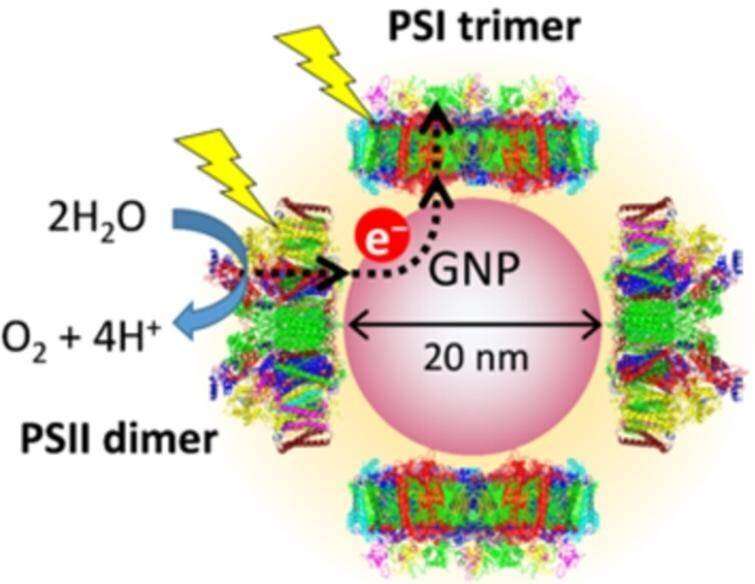New nanodevice could use solar energy to produce hydrogen

Scientists describe the design of a PSI-GNP-PSII conjugate that could be used as a platform for developing a light-driven, water-splitting nanodevice for generating hydrogen, in Biomedical Spectroscopy and Imaging
Solar energy is considered by some to be the ultimate solution to address the current energy crisis and global warming and the environmental crises brought about by excessive consumption of fossil fuels. However, this clean and inexhaustible energy source is difficult to capture and store. In a novel study, scientists propose using solar energy to produce hydrogen by splitting water, reports Biomedical Spectroscopy and Imaging.
Hydrogen is a clean, flexible energy carrier primarily produced from fossil fuels. Taking another approach, scientists looked at how plants and other organisms use photosynthesis to convert light energy into chemical energy that can be stored and later released as needed to fuel the organisms' activities. They designed a gold nanoparticle conjugate that could be used as a platform to develop a semi-artificial photosynthesis system using a light-driven, water-splitting nanodevice for generating hydrogen.
"Photosynthesis in plants and algae is an efficient means of converting light and energy to produce storable chemical energy," explained lead investigator Takumi Noguchi, Ph.D., Division of Material Science, Graduate School of Science, Nagoya University, Nagoya, Japan. "Artificial photosynthesis, which mimics natural photosynthesis but directly generates fuels such as alcohols and hydrogen rather than sugars, may be the key to solving our energy problem."
In this study, scientists assembled cyanobacterial photosystem I (PSI) and photosystem II (PSII) complexes on a gold nanoparticle (GNP) to generate a PSI-GNP-PSII conjugate through genetically modified histidine tags attached to the PSI and PSII proteins, aiming at the development of a water-splitting nanosystem. They were assembled by modifying the method of preparation of a PSII-GNP conjugate. Single-particle fluorescence measurement using a cryogenic microscope as well as conventional optical absorption and fluorescence measurements provided definitive evidence that both PSI and PSII complexes are bound together to a single GNP in the generated PSI-GNP-PSII conjugate.
This research group had previously shown that PSII core complexes retained the oxygen evolving activity in PSII-GNP conjugates, in which the PSII complexes are bound to GNPs on the electron-acceptor side. It has also been reported that PSI complexes can evolve hydrogen upon irradiation using electrons from sacrificial electron donors when they are coupled to platinum nanoparticles.
"Thus, the PSI-GNP-PSII conjugate that we generated in the present study can be a useful platform for further development of a light-driven, water-splitting nanodevice for production of hydrogen from water using solar energy," concluded Dr. Noguchi.
More information: Kousuke Kawahara et al. A gold nanoparticle conjugate with photosystem I and photosystem II for development of a biohybrid water-splitting photocatalyst, Biomedical Spectroscopy and Imaging (2020). DOI: 10.3233/BSI-200200
Journal information: Biomedical Spectroscopy and Imaging
Provided by IOS Press





















